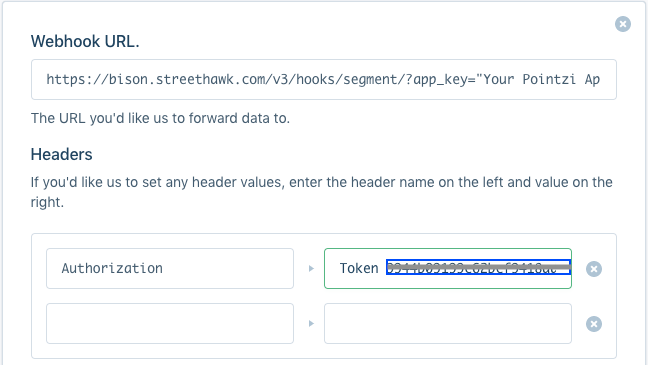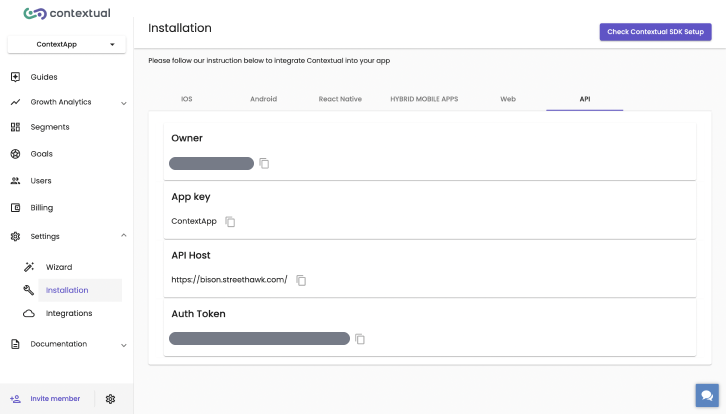Segment.io Integration¶
If you already use Segment inside your application and want to integrate Contextual data with your segment data, then please follow the below instructions to ensure the Segment ID is linked to the Contextual InstallID.
Info
Contextual will store Segment's "Identify" Traits only, please filter out other events such as "Track". Contextual supports Traits of the following types: String, Numeric, Datetime (a string in ISO-8601 format), These types map directly to Contextual's Tags. Contextual will ignore structures.
IOS¶
Swift:
After Segment initialisation, during registration simply pass segment anonymousId into Contextual register function
1 2 3 4 5 6 7 8 9 10 | |
If you didn't link segment during Contextual registration and would like to do it at any other place in your application
1 2 3 4 5 6 7 8 | |
Objc:
After Segment initialisation, during registration simply pass segment anonymousId into Contextual register function
1 2 3 4 5 6 7 8 9 10 11 12 | |
If you didn't link segment during Contextual registration and would like to do it at any other place in your application
1 2 3 4 5 6 7 8 9 | |
Android¶
1.After Segment initialisation, simply pass segment anonymousId into Contextual register function
1 | |
1 2 3 4 | |
2.Contextual provides a ISHEventObserver to inform notification center about initialisation of SDK is done. Therefore, please register a notification as
1 2 3 4 5 6 7 8 9 10 | |
3.Please call segment api such as sending traits in the callback function onInstallRegistered
1 2 3 4 5 | |
Segment Destination Webhook¶
1.Go to your Segment Dashboard
2.Please add the below webhook URL in your segment destinations
1 | |
3.Then add "Contextual Auth Token" to Header as below

Info
To get the "Contextual Auth Token" and "Contextual App Key" go to the Contextual Dashboard Settings and choose from the API Tab

You can find more auth token information at the following link https://docs.contextu.al/authentication/